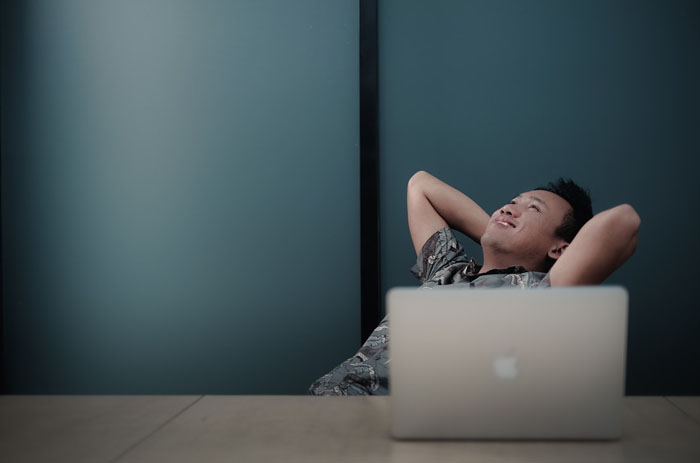
User manuals serve as a vital link between manufacturers and end users. They provide details on the installation, use, maintenance, and troubleshooting of a product. A well-crafted user manual can significantly reduce the time customers spend learning how to use a product, while also lowering the company’s costs associated with providing customer support. In this article, we will guide you through the process of writing user manuals, offer an overview of the various types of user manuals, and provide insights into using specialized tools, such as ClickHelp, for creating efficient user documentation.
What Is a User Manual?
A user manual is a comprehensive document that includes detailed information about various aspects of a digital product, such as its features, operation, and safe usage. This document is designed to help users understand the product and utilize it to its fullest potential. A good user manual is clear, concise, and readily accessible, ensuring that users can quickly find the information they need.
Let’s take, for instance, a popular phone model: its user manual typically includes descriptions of both hardware components and software features. It provides a complete set of instructions on how to customize the phone to individual preferences, set it up, and troubleshoot problems. The manual often contains flowcharts and screenshots to guide users through step-by-step procedures. A well-organized table of contents with indexed sections allows users to easily navigate the document, whether they are looking for information on how to connect to Wi-Fi or how to use the camera.

Types of User Manuals
Technical manuals are essential documents that provide users with comprehensive information about a product, covering everything from installation to operation, maintenance, and troubleshooting. These manuals include instructions on how the product functions, how to identify and resolve related issues, and how to optimize its performance. Let’s’ discuss different types of technical manuals, their objectives, and present real-life examples to illustrate why these manuals are so important.
Installation Manuals
Installation manuals are documents created to guide users through the setup or installation process of a product. They usually contain step-by-step instructions, diagrams, and illustrations to ensure that the product is installed properly and safely. A well-drafted installation manual should also provide information about the necessary tools, materials, and safety precautions.
For example, if a homeowner purchases a new dishwasher, the accompanying installation manual will guide them through the entire process – from connecting the water supply lines and electrical wiring to attaching the drainage system. The manual will also include instructions on how to level the dishwasher and ensure proper ventilation.
Operational Manuals
An operational manual provides instructions on product usage, step-by-step procedures, and safety guidelines. In other words, such documents help users understand how to effectively implement the functions and features of a product while being aware of its limitations.
For instance, if a company purchases a new printer for the office, the operational manual will explain how to load paper, replace the ink cartridge, and adjust print settings. The safety precautions include information on how to avoid paper jams and prevent electric shock.
Maintenance Manuals
Maintenance manuals offer advice on how to carry out maintenance and repairs to keep the product functioning properly. These manuals typically include care and repair schedules, troubleshooting tips, and detailed procedures for necessary repairs.
A typical example of a maintenance manual is a car maintenance guide. The guide from the manufacturer recommends periodic oil changes, tire rotations, and brake pad replacements. It will also detail how to check and replace the air filter, spark plugs, and other essential components.
Service Manuals
Service manuals, also known as troubleshooting manuals, help users identify and resolve common problems and errors with the product. These manuals outline diagnostic procedures, explain error codes, and provide step-by-step guidance on how to fix issues promptly.
Let’s consider a case when a computer user encounters an error message on the screen. A manufacturer-provided troubleshooting manual can help identify the problem and offer step-by-step instructions on how to fix it. The manual also includes tips on checking for software updates or running a virus scan.
Installation, operational, maintenance, and service/troubleshooting manuals provide the user with the essential information they need to install, operate, maintain, and troubleshoot products. These manuals are crucial in ensuring that the product is used as intended and remains functional over time.
How to Write a Good User Manual
In this section, you will find a quick step-by-step introduction to creating user manuals. This information will be useful for both new technical writers and experienced specialists.
Study
Writing a user manual begins with thorough preparation. There are basically two main things to study here:
- The subject of the user manual. To be able to create clear and helpful user manuals, technical writers need to study the subject with great attention to details. Understand its features, functions, and limitations.
- The target audience. Knowing who will use the manual is critical. While the basic principles of technical documentation—conciseness, neutrality, and structure—remain consistent, different audiences require different approaches. You need to assess the level of knowledge your target audience has about the subject. For documentation aimed at professionals, you should provide in-depth information. For novice users, focus on essential aspects and avoid complex details that might be confusing.
For example, consider IKEA’s approach to user manuals for novice users. IKEA furniture is assembled by people worldwide, most of whom are not professional assemblers. IKEA’s technical writers have developed a straightforward, universal style to communicate effectively with users who may have minimal experience with furniture assembly.
This example illustrates the importance of tailoring documentation to the target audience.
Plan
Planning is crucial. Poor planning can lead to implementation delays or, in some cases, require a complete project redo. To avoid these issues, it’s essential to create a comprehensive documentation plan.
So, what’s the best approach here? A documentation plan! In short, a documentation plan is a document containing all the necessary information for reference when working on a user manual, such as:
- general information about a project,
- tools used,
- timeframes,
- workflow details,
- etc.
The purpose of the documentation plan is to ensure that everyone involved in the project has access to the information they need. This approach provides consistency and saves time.
Planning also involves structuring the help topics. It is essential to organize everything into a coherent system before starting the actual writing. Documentation projects can involve hundreds of topics, so imagine the difficulty of having to restructure everything later!
Write
At this stage, the actual technical writing is done. How can one improve this process? In the recent past, technical writers worked with basic text editors, and some companies still do.
This can be easily explained – when you have a steady workflow, you might be reluctant to change it. However, the market of technical writing tools has evolved significantly and offers many advanced options.
Help authoring tools are tailored specifically to meet the needs of technical writers.. They are intended to make the writing process more efficient and enjoyable.
Key features of helpful help authoring tools include:
- Single sourcing techniques: create different outputs of the same documentation using conditional content, variables, etc.
- Teamwork and workflow options: manage roles, track topic completion statuses, streamline collaboration
- Pre-made elements: use warning and information boxes, quick navigation elements, and other pre-designed components.
- Numerous import/export formats: simplify the initial migrating to a help authoring tool with a variety of formats.
- Ready-to-use templates: tools like ClickHelp offer templates designed with current trends and tech writing needs in mind.
These are just a few of the features that can enhance your documentation project. In reality, online documentation tools offer even more capabilities.
Creating a User Manual in ClickHelp
ClickHelp is an advanced online documentation tool that enhances the process of creating, managing, and publishing user manuals. It offers a broad range of powerful features and an ergonomically designed interface, making it suitable for both technical writers and users with limited technological expertise. This makes ClickHelp an ideal choice for both small businesses and large organizations.
Intuitive Interface: Making the Documentation Process Easy
ClickHelp is designed with an intuitive interface to simplify the documentation creation process. The user-friendly dashboard and navigation system enable you to create, edit, and publish user guides efficiently. With ClickHelp, you can focus on creating excellent content rather than struggling with complex documentation tools.
Collaborative Authoring: Strengthening Teamwork and Product
One of ClickHelp’s key advantages is its collaborative feature. Multiple authors can work on the same project simultaneously, which boosts collaboration and productivity. ClickHelp allows for the setup of different roles and permissions for team members, ensuring that each contributor has the necessary access and control to perform their tasks. This collaborative approach leverages the collective experience of your team, resulting in more comprehensive and accurate user guides.

Templates: Making Design Simple and Effective
ClickHelp’s templates are designed to be readable on desktops, laptops, tablets, and smartphones. This feature is increasingly important in today’s “mobile-first” world, where users expect to access information on the go. ClickHelp’s templates enable the creation of adaptive user manuals optimized for various devices, providing a seamless user experience and enhancing overall engagement.
Integrated Analytics: Measuring Performance and Improving Content
The integrated analytics feature, accessible via the ClickHelp Dashboard, provides valuable insights into how users interact with your user manuals. This information helps measure content performance, identify areas for improvement, and adjust your documentation strategy. ClickHelp’s analytics track metrics such as page views, search popularity, and user feedback, allowing you to make informed decisions and optimize your user manuals.

Functionalities That Enhance Your Documentation Skills
ClickHelp offers a range of powerful features that enhance your documentation capabilities, including:
- Conditional Content: Tailor content to different user scenarios, such as product variants or regional differences.
- Automated Publishing: Easily publish user manuals to PDF, Web, and EPUB formats with just a few clicks.
- Search and Filter: Quickly find information with advanced search and filter functionalities.
These features, among others, will help you create professional user manuals.
Benefits of the Tool for Technical and Non-Technical Writers
ClickHelp is just perfect, both for technical and non-technical writers. Its features and functionalities provide advanced capabilities for creating complex documentation with ease. The intuitive user interface and user-friendly dashboard simplify the process of creating high-quality user manuals, even for those with limited technical knowledge.
As a next-generation documentation tool, ClickHelp is designed to streamline the creation, maintenance, and publication of user manuals. It offers essential features for team authoring, responsive templates, integrated analytics, and many other powerful tools to help you produce professional and engaging user manuals effectively. ClickHelp is ideal for creating top-notch documentation and enhancing the user experience, regardless of whether the writer is technical or non-technical.

Conclusion
Writing a user manual is a critical task that requires careful planning and execution. Understanding the different types of user manuals helps in creating an effective guide for users. The specialized tools discussed in the article enhance the documentation process by enabling the development of high-quality manuals that meet user needs and significantly reduce support costs.
Remember, a user guide is not just a document; it is a key factor in a product’s success.
Good Luck with your technical writing!
ClickHelp Team
Author, host and deliver documentation across platforms and devices

